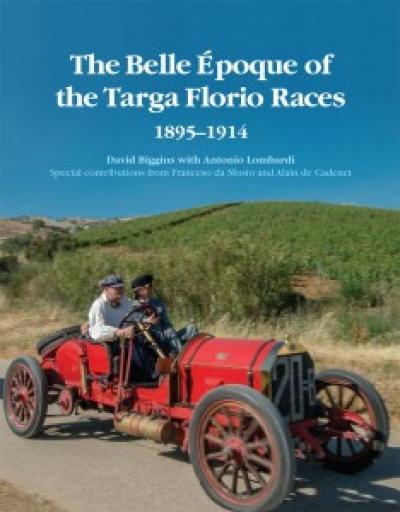
“Antique Auto Body Wood Work for the Restorer” by C.W. Terry with Arthur Hall. This book is largely drawn from “Motor Body Building,” which was published in London and New York in 1914 – the top text in the field, written by Britain’s best experts. You will find details of the principles of design from that era, rules of thumb for proportions of particular body types, and specifications for the wood & metal typically used on bodies. Learn about principles of putting together bodies in that era, such as the selection of timber, ways of chassis framing, design for weight & accommodation, constructing the framework, kinds of joints used in framing, strength and stiffness of materials, stress & strain, panel work, iron work, mounting (to allow for movement), doors & pillars, mudguards, methods for making corners in wood, and much more. The authors give detailed instructions for creating design drawings from the side elevation, cant board (side seen from top), the chassis line, sweeps, proportion in seating, and what makes a good design. Includes illustrations, diagrams, drawing, design and construction of body types, including: Limousine, Limo with quarter windows, limo with fishtail back, limo with round quarters, Cabriolet, Convertible two-seater, Touring (Torpedo), Landaulet, Landaulet with quarter windows, flush side body, and detachable Tonneau (convertible 2-4). 127 pages, softbound . Own this hard-to-find information on a golden age of automobiles.

Motor racing originated on French public roads and could be said to have begun in Britain in May 1899 with a series of time and load carrying trials at Crystal Palace Park in London. Later in the same year, races for several classes of vehicle- cars, motor cycles and tricycles- were held on a small banked oval cycle track in the park.
Organization was quickly imposed by American newspaper magnate- Gordon Bennett who established the Gordon Bennett cup for international competition in 1900 and rules were established.
Striving for more speed, engines became more powerful and noisier and after 1903, races were held on relatively short circuits of public roads on which the cars made a number of laps. A universal ‘Formula’ or set of rules for the engine capacity and weights of competition cars was devised as early as 1904 and a 1906 event organized by the Automobile Club de France was held over closed triangular 65 mile circuit at Le Mans and called a Grand Prix- Large Prize.
The term Grand Prix soon became associated with any motor race where international competition was invited.

Revealing the esteemed history of the world’s most famous locomotive
Few locomotives are as widely known or excite so much interest as the Flying Scotsman. Designed by Sir Nigel Gresley in 1923, the locomotive became a flagship for the London and North Eastern Railway and represented them at the British Empire Exhibition in 1924 and 1925. Thus began Flying Scotsman’s fame, which only continued as the locomotive broke records, becoming the first to exceed 100mph in 1934 and taking the longest journey of any steam locomotive in 1988–89. Passing through such hands as Alan Pegler’s and Pete Waterman’s after her retirement from British Railways, Flying Scotsman is now in public hands for restoration. Here James S. Baldwin uses his expert knowledge and unrivaled collection of images to highlight the illustrious career of this world-famous locomotive.

“The Belle Epoque (The Beautiful Age) coincides with the period of Edwardian extravagance so well depicted in the now famous TV series “Downton Abbey”. During this era, at the turn of the 20th century, Paris was the epicentre of fashion and art , London of society and class, Vienna of intellectual activity. New York’s own golden age was based on money, that classic American value!
There was an ebullient atmosphere everywhere , decadent and magnificent at the same time, coinciding with the momentous changes brought by modern inventions including wireless communication, the automobile, and the airplane. The privileged and moneyed classes enjoyed lives of extravagant luxury in sharp contrast to the desperate lives of the under classes, urban and rural. This contrast was even more evident in Sicily, where so many still endured medieval conditions. Palermo was one of Europe’s capitals of the period, visited regularly by royalty including the Czar of Russia and Germany’s Kaiser.
During those same years Vincenzo Florio, scion of Sicily’s leading family, created his eponymous race, the Targa Florio. He was only 23 when its first edition took place in 1906, but the honor committee included the presidents of the Automobile Clubs of the United Kingdom, France and Germany. Florio intended Sicily to be at the center of the blossoming new world of auto racing . He succeeded beyond his wildest dreams, and his story is being made into a movie titled ” Pistons, Passions & Sicilian Pleasures”. It will recount the early life of Vincenzo Florio and his friend and protege Felice Nazzaro, destined to become one of the greatest drivers of all time.
As a prelude to the release of the film, Upfolds Publishing announces the publication of the companion book..
The book narrates the experience of making this film. It is rich in illustration both historical and modern. The photographic artist Becca Parker captures both the beautiful landscapes of Sicily and the excitement of one hundred year old racing cars, reliving the passions of the Targa Florio, the oldest race in the world.
The book is a hard covered coffee table style in high definition.
“






